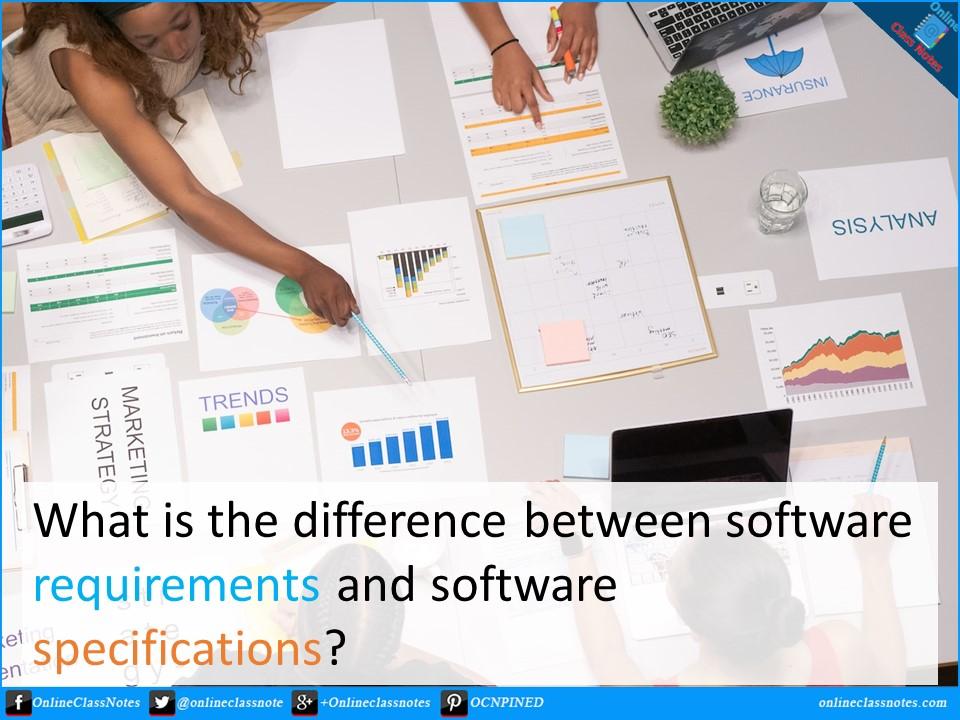Demystifying the Difference Between Software Requirements and Software Specifications
Introduction:
In the realm of software engineering, two terms that often surface are software requirements and software specifications. While they are closely related, they hold distinct meanings and serve different purposes.
Understanding Software Requirements:
Software requirements are a vital aspect of software development. They represent the needs, expectations, and constraints that a software system must fulfill to satisfy its stakeholders. Software requirements define the functionalities, features, and qualities that the software application should possess. These requirements are typically expressed in natural language, supplemented by diagrams, use cases, and user stories.
Software requirements capture the “what” rather than the “how” of a software system. They focus on the high-level objectives and functionality, describing the intended behavior of the software from a user’s perspective. Requirements are typically gathered through interactions with stakeholders, such as interviews, surveys, and workshops. They serve as a foundation for software development, guiding the design, implementation, and testing phases.
Key characteristics of software requirements include:
- User-centric: Software requirements reflect the needs and expectations of the end-users and stakeholders of the software system.
- High-level: Requirements provide a broad overview of the desired functionalities, features, and qualities of the software without delving into implementation details.
- Subject to change: Requirements can evolve throughout the software development life cycle as stakeholders gain more clarity or encounter new insights or challenges.
Understanding Software Specifications:
Software specifications, on the other hand, delve into the detailed design and technical aspects of the software system. They bridge the gap between requirements and implementation, providing a clear blueprint for developers to follow. Specifications focus on the “how” of the software system, defining the technical details, architecture, interfaces, algorithms, and data structures required to realize the software requirements.
Software specifications often include:
- Architectural Design: Specifications describe the overall system architecture, including the arrangement of modules, subsystems, and their interactions.
- Detailed Functionality: Specifications outline the specific functions, operations, and behavior of the software system, often expressed through pseudo-code or flowcharts.
- Data Models: Specifications define the structure and organization of data within the system, including data schemas, relationships, and constraints.
- Interfaces: Specifications outline the interfaces between different system components, modules, and external systems, defining how they interact and exchange data.
- Performance Requirements: Specifications specify the performance characteristics of the software, such as response times, throughput, and resource utilization.
- Security and Quality Considerations: Specifications address security measures, error handling, exception handling, and any quality standards or guidelines that need to be followed.
Key characteristics of software specifications include:
- Technical Details: Specifications provide a comprehensive and detailed description of the software system, addressing design choices, algorithms, data structures, and technical constraints.
- Implementation-oriented: Specifications serve as a guide for developers, providing them with the necessary information to build the software system accurately.
- Stability: Unlike requirements, specifications tend to be less prone to change once they are defined, as they form the foundation for development.
Distinguishing Between Software Requirements and Software Specifications:
While software requirements and software specifications share a common goal of guiding software development, they differ in their focus and level of detail:
- Focus: Requirements concentrate on the desired functionalities and qualities of the software system from a user’s perspective, while specifications dive into the technical aspects and implementation details.
- Level of Detail: Requirements provide a high-level overview of the software system, allowing for flexibility and adaptability. Specifications, on the other hand, offer granular details and serve as a blueprint for developers to follow during implementation.
- Stakeholder Perspective: Requirements capture the needs and expectations of stakeholders, including end-users, clients, and business owners. Specifications address the technical concerns and considerations of developers and system architects.
- Flexibility: Requirements are subject to change as stakeholders gain more clarity or new insights arise. Specifications, once defined, tend to be more stable and provide a solid foundation for implementation.
Software requirements and software specifications play distinct roles in the software development process. Requirements focus on capturing the needs and expectations of stakeholders, while specifications provide detailed technical guidance for developers. Understanding the difference between these two terms is crucial for effective communication, collaboration, and successful software development. By properly defining and managing requirements and specifications, software engineers can build software systems that meet stakeholder expectations, adhere to technical standards, and deliver high-quality solutions.
